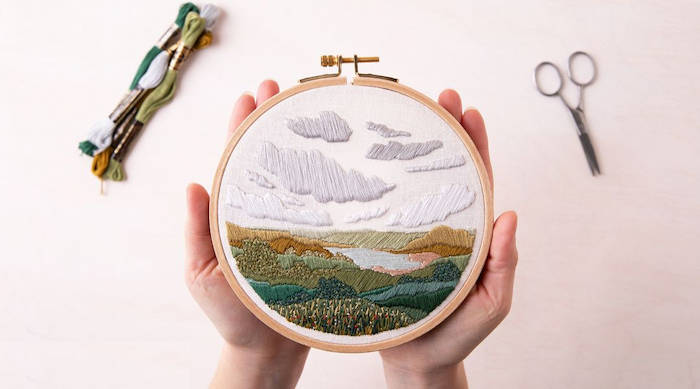
Embroidery Supplies Checklist: Must-Have Items
If you’re a beginner in embroidery, you might be wondering what supplies you need to get started. Even if you’re an experienced embroiderer, it’s important to have a checklist of must-have items to ensure that you have everything you need for your next project. Here’s a comprehensive list of embroidery supplies that should be on your checklist.

1. Embroidery Needles:
One of the most important items on your embroidery supplies checklist is the embroidery needle. The type of needle you use will depend on the type of fabric you’re using and the type of embroidery you plan on doing. Make sure to have a variety of sizes on hand.
2. Embroidery Floss:
Embroidery floss is the colorful thread that you use to create your embroidery designs. You can find it in a wide range of colors and shades, and it’s important to have a variety of colors on hand. You may also want to consider purchasing embroidery floss organizers to keep your threads neat and organized.
3. Embroidery Hoop:
The embroidery hoop is used to hold your fabric taut while you’re stitching. It’s important to have a hoop that is the right size for your project. Hoops come in various sizes, and you may want to consider purchasing multiple sizes for different projects.
4. Fabric:
Embroidery can be done on a variety of fabrics, including cotton, linen, and even felt. When selecting fabric, make sure to choose one that is appropriate for your project and that can withstand the embroidery process.
5. Scissors:
Having a good pair of scissors is essential for any embroidery project. You’ll need them to cut your embroidery floss and fabric. Make sure to choose scissors that are sharp and comfortable to hold.
6. Embroidery Patterns:
If you’re new to embroidery, you may want to start with a pre-made embroidery pattern. You can find a variety of patterns online or at your local craft store. Alternatively, you can create your own embroidery patterns using a variety of techniques, such as tracing or transferring.
7. Marking Tools:
Marking tools, such as water-soluble pens or chalk, are used to mark your fabric with your embroidery design. These marks can help guide your stitching and ensure that your design is symmetrical and even.
8. Lighting:
Good lighting is essential for embroidery, especially if you’re working with dark fabrics or fine details. Make sure to have a good light source, such as a lamp or natural light, to avoid eye strain and ensure that your stitches are accurate.
In conclusion, having a comprehensive embroidery supplies checklist is essential for any embroiderer, whether you’re a beginner or an experienced pro. By having all the necessary supplies on hand, you can ensure that your embroidery projects are successful and enjoyable.